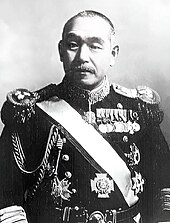
While it is a legend that was never confirmed, it is said that the bombing of Hiroshima was the result of a mistranslation. Let us take a brief look back at how this historical fact developed:
Japan was being seriously battered in the spring of 1945: Allied air raids were destroying railways, roads and bridges faster than they could be rebuilt. U.S. warplanes had destroyed all that remained of the Japanese Navy. But the military high command refused to surrender, determined to fight until the last soldier fell.
General Korechika Anami, War Minister, promised that Americans would be expelled from Okinawa. Convinced that Japan would benefit more by surrendering than staying in the war until the end, a small group of diplomats opposed the militarists, and in the hopes of obtaining better terms than an unconditional surrender, began secret talks with the Soviet Union, still neutral, seeking Russia’s mediation to make peace.
On June 3, former Prime Minister Koki Hirota visited Soviet Ambassador Jacob Malik, who listened to the proposals coldly. The idea was to fly to Moscow and put an end to war at all costs. But Stalin eventually mentioned to President Truman, in Potsdam, the Japanese had expressed wishes to open negotiations. But the Soviet dictator said that Russia had rejected the suggestion as insincere. The Potsdam Declaration was issued on July 26, 1945.
It was signed by the United States, the UK and China, and called for Japan’s surrender or annihilation. Among the Japanese leaders, there was a reaction of jubilation because its terms were more benign than expected. It promised that Japan would not be destroyed as a nation and that the Japanese would be free to choose their own government.
However, there were several complications. What to do with the negotiations initiated through the Russians? Only two days earlier they had sent the latest proposal to Moscow. Another detail that the cabinet was obliged to consider was that until that time the Japanese had only received news of the ultimatum through the radio. Could the government act on the basis of that unofficial information? The announcement of the acceptance of the Allied terms was not expected to take long, but in the meantime Prime Minister Kantaro Suzuki had to receive journalists the next day and was certain that they would ask questions about the Potsdam Declaration.
It was agreed, therefore, that Suzuki would say that the cabinet had not made any decision at the request of the Allies. The fact that the cabinet had not flatly rejected the ultimatum indicated to the Japanese people that something was in the air. “The government had no intention of rejecting the Allied demands,” says Kawai. Facing the press on July 28, Minister Suzuki stated that the cabinet maintained an attitude of mokusatsu. This word not only has no exact equivalent in European languages, and even in Japanese it is still ambiguous.
Its meaning can be “ignore/not pay attention to” or “refrain from any comment.” Unfortunately, translators from the Domei news agency could not know which of the two meanings Suzuki had in mind and while hastily translating the minister’s statement into English, chose the wrong one. Tokyo Radio towers spread throughout the Allied world the news that Suzuki’s cabinet had decided to “ignore/not pay attention to” the Potsdam Declaration. The six column headline of the New York Times for July 28, 1945, clearly indicated the meaning that outside of Japan the news was being written: “The squad attacks after hearing that Japan ignores the Declaration.” The rest is history. Secretary of War Henry L. Stimson confirmed in his report on the final decision to use the atomic bomb that the error in interpretation of the word mokusatsu was what led the attack on Hiroshima.
“On July 28,” wrote Stimson, “the Prime Minister of Japan, Suzuki, rejected the Potsdam Declaration. Faced with this attitude we had no way to demonstrate that the ultimatum was what it claimed to be. And for that purpose, the atomic bomb was an eminently suitable weapon.” The atomic attacks on Hiroshima and Nagasaki precipitated the Russians on Manchuria. Their progress continued in a devastating fashion up to ten days after the Japanese surrender. By stopping the din of battle, Russia had dramatically strengthened its position in the Far East. Why did the Japanese government allow the error surrounding mokusatsu to happen without clarification? Why did they not seek to clarify a misunderstanding of such dire consequences? Here we enter the realm of conjecture…
The Japanese army was then arresting so-called “peace mongers.” Not even high places were useful as protection against the military fanatics destroying anyone who opposed them. Reaching the summit of power they enjoyed when they got the crucial cabinet meeting on July 27, the pacifists had taken many months of underground work. The situation remained precarious, with the brash chief of the army and navy barely contained.
Then, Suzuki and the Domei Agency, by launching an apparent challenge to the Allied world, tipped the scales in favor of the militarists. Supporters of peace had to remain silent to save their lives. Kawai resigned from his post as director of Times of Tokyo and is currently a professor of political science at Ohio University. As heI said not long ago: “The fact that Americans have not understood the true attitude of the Japanese government against the Potsdam Declaration is easy to explain.
“But the attitude of the Russians by not informing its Western allies that Japan was ready to give up is something very different. ” And one wonders if it is not possible that by strengthening the position of Russia in the Far East, this mistranslation led the United States and the rest of the world towards a string of serious calamities.
(Spanish version: https://www.trustedtranslations.com/hiroshima-%C2%BFerror-de-traduccion-2011-02-01.html)





